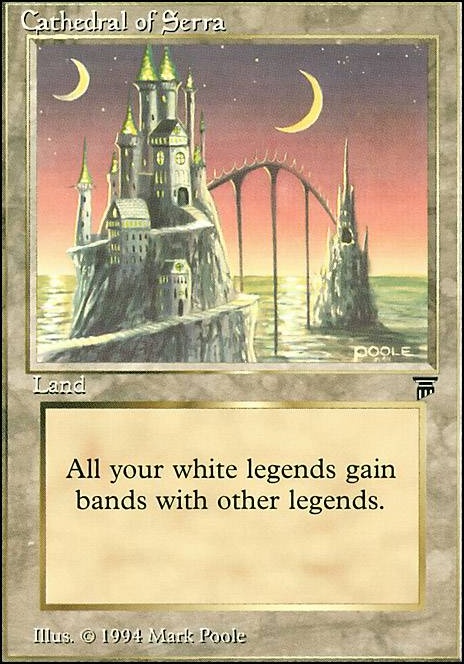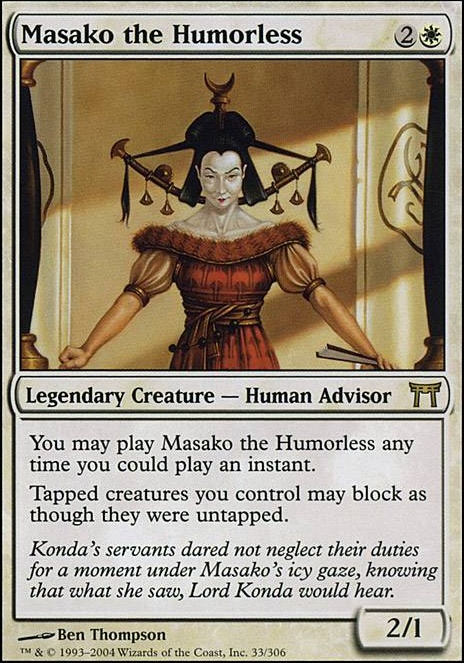Creature (37)
- 1x Anafenza, Kin-Tree Spirit
- 1x Baird, Steward of Argive
- 1x Battering Ram
- 1x Benalish Hero
- 1x Benalish Infantry
- 1x Camel
- 1x Commander Eesha
-
1x
Elesh Norn, Grand Cenobite

- 1x Esper Sentinel
- 1x Heliod, God of the Sun
- 1x Icatian Phalanx
- 1x Icatian Skirmishers
- 1x Kjeldoran Escort
- 1x Kjeldoran Knight
- 1x Kjeldoran Phalanx
- 1x Kjeldoran Skycaptain
- 1x Kjeldoran Skyknight
- 1x Kjeldoran Warrior
- 1x Knights of Thorn
-
1x
Kytheon, Hero of Akros
 Flip
Flip
- 1x Linden, the Steadfast Queen
- 1x Mangara, the Diplomat
- 1x Mesa Pegasus
- 1x Moonshaker Cavalry
- 1x Noble Elephant
- 1x Odric, Master Tactician
- 1x Pikemen
-
1x
Rune-Tail, Kitsune Ascendant
 Flip
Flip
- 1x Sensei Golden-Tail
- 1x Shield Bearer
- 1x Taranika, Akroan Veteran
- 1x Teremko Griffin
- 1x Urza's Avenger
- 1x Urza's Engine
- 1x Wall of Shields
- 1x War Elephant
- 1x Weathered Wayfarer
Land (34)
- 1x Ancient Tomb
- 1x Castle Ardenvale
- 1x Cathedral of Serra
- 1x Daru Encampment
- 1x Eiganjo Castle
- 1x Eiganjo, Seat of the Empire
- 1x Emeria, the Sky Ruin
- 1x Forbidding Watchtower
- 1x Idyllic Grange
- 1x Minas Tirith
- 1x Myriad Landscape
- 1x New Benalia
- 1x Nykthos, Shrine to Nyx
-
8x
Plains

-
8x
Plains

- 1x Sandstone Bridge
- 1x Sejiri Steppe
- 1x Temple of the False God
- 1x Terrain Generator
- 1x Windbrisk Heights
Artifact (7)
- 1x Arcane Signet
- 1x Archaeomancer's Map
- 1x Baton of Morale
- 1x Helm of Chatzuk
- 1x Oketra's Monument
- 1x Pearl Medallion
- 1x Sol Ring
Sorcery (3)
Commander (1)
Enchantment (11)
- 1x Cooperation
- 1x Dawn of a New Age
- 1x Flowering of the White Tree
- 1x High Ground
- 1x Honor of the Pure
- 1x Land Tax
- 1x Lashknife Barrier
- 1x Marshal's Anthem
- 1x Smothering Tithe
-
1x
Tenuous Truce

- 1x Wedding Announcement Flip
Instant (6)
Planeswalker (1)
Suggestions
Updates Add
Comments
Attention! Complete Comment Tutorial! This annoying message will go away once you do!
Important! Formatting tips — Comment Tutorial — markdown syntax
Please login to comment
90% Casual
Competitive
| Date added | 2 years |
| Last updated | 1 year |
| Legality | This deck is Commander / EDH legal. |
| Rarity (main - side) | 9 - 0 Mythic Rares 37 - 0 Rares 18 - 0 Uncommons 20 - 0 Commons |
| Cards | 100 |
| Avg. CMC | 2.95 |
| Tokens | 1/1 W Token Creature Knight, Enchantment Cleric 2/1 W, Human 1/1 W, Treasure, Warrior 1/1 W w/ Vigilance |
| Folders | Stealing |
| Votes | |
| Ignored suggestions | |
| Shared with | |
| Views |


